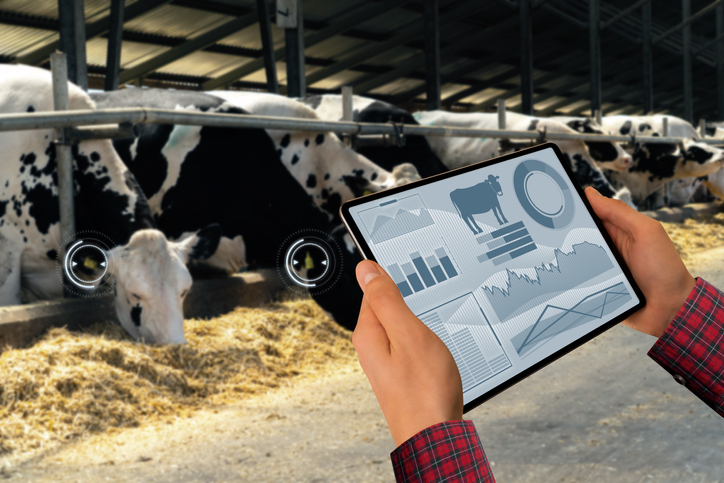
Latest information

Towards a smarter and more sustainable primary sector
Digitization in the primary sector involves the integration of digital technologies in all areas of an agricultural, livestock, fisheries or forestry enterprise, transforming its operations and the way it generates value. It is not just about adopting technology, but changing the way business is done, improving efficiency, traceability and sustainability. The benefits are clear: from optimising resources to accessing new markets through digital platforms. By understanding these benefits, owners can make more informed decisions on how and why to start this transformation process.
What are the benefits of digitization?
- Improved efficiency and cost reduction. One of the most significant benefits of digitization is the optimisation of processes leading to greater operational efficiency. Tools such as cloud-based farm management systems allow farmers and ranchers to monitor and control their operations in real time, reducing the need for travel and duplication of tasks. This translates into considerable savings in time and resources. In addition, the automation of processes, from planting to harvesting, minimises the excessive use of water, fertilisers and energy, thus reducing production costs and environmental impact.
- Increased production and quality. The implementation of digital technologies also leads to a significant improvement in the quantity and quality of production. Sensors and drones provide accurate data on the state of crops and livestock, enabling early interventions to prevent diseases or pests. Precision in agriculture, for example, facilitates the accurate application of inputs at the required doses, improving plant health and increasing yields, while ensuring the quality of the final product.
- Data management and decision making. The ability to collect, store and analyse large volumes of data transforms the way businesses in the primary sector make decisions. Advanced analytics and Big Data enable deep understanding of patterns and trends, improving planning and risk management. With detailed and up-to-date information, entrepreneurs can make more informed and strategic decisions, from crop selection to resource management.
- Sustainability and the Environment. Digitization also plays a key role in promoting more sustainable practices. Technology enables more efficient management of natural resources, reducing waste and minimising the environmental footprint of primary sector activities. Tools such as smart irrigation systems adjust water use to the real needs of crops, avoiding excess and contributing to the conservation of water resources.
- Access to new markets and improvement of the supply chain. Finally, digitization facilitates the integration of primary sector companies into global supply chains and the opening up of new markets. Online platforms and e-commerce solutions allow Galician producers to sell their products beyond local borders, reaching consumers all over the world. Digital traceability, on the other hand, increases consumer confidence and enhances brand reputation.
What steps should a company in the primary sector take to go digital?
The primary sector is a fundamental base for the world economy, and especially in communities such as Galicia, where agriculture, livestock and fishing are so important. In this context, digitization emerges as a very useful tool to guarantee the competitiveness and sustainability of this type of business. Implementing digital technologies not only modernises operations but also opens up a wide range of benefits, but how to take the step
- Before embarking on digitization, it is essential to conduct a diagnosis of the current state of the company. This involves a detailed assessment of the existing technology infrastructure, manual processes amenable to digitization and the level of digital skills among employees. Understanding where the company is in terms of resources and capabilities will allow establishing a clear starting point and defining realistic goals for digital transformation. This phase is crucial to identify specific needs and areas for improvement, thus laying the foundation for an effective digitization plan.
- Digitization requires careful strategic planning. Setting clear and specific digitization objectives is the first step to ensure that the actions undertaken will have the greatest impact. Identifying the tools and technology solutions that best suit the needs and objectives of the business is equally important. This can include everything from farm management systems to e-commerce platforms. Planning should also consider budget, timelines and integration with existing systems, thus ensuring a smooth and efficient transition to more digitised operations.
- The implementation phase must be carried out in a methodical and controlled manner to ensure the effective integration of new technologies. This involves not only the physical or virtual installation of software and hardware, but also the configuration and customisation according to the specific needs of the company. In parallel, it is essential to invest in staff training, ensuring that all employees understand how to use the new tools and processes. Training must be continuous in order to adapt to technological updates and maximise the use of new digital solutions.
Digital transformation does not end with the implementation of new tools; it requires a continuous commitment to monitoring and improvement. It is crucial to establish metrics and tracking indicators to monitor the performance of new digital solutions and their impact on the business. This allows identifying areas of success and aspects that need to be adjusted. Continuous improvement is based on feedback from employees and the data collected during this monitoring, ensuring that digitization delivers the maximum possible value and meets the changing needs of the business and the market. The key is to take a proactive approach and be willing to adapt to change, thus ensuring a prosperous and digitised future for the primary sector in Galicia.